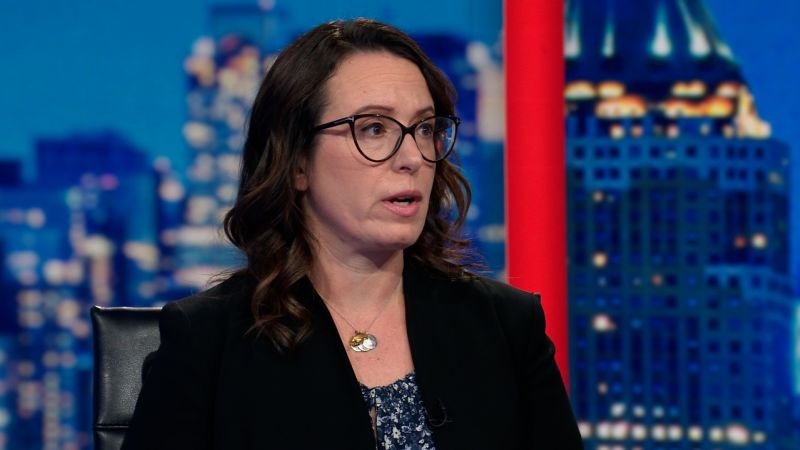Heightened bond-market volatility has accelerated a “crescendo” of demand from large, sophisticated investors for exchange-traded funds focused on fixed income, according to Invesco’s Anna Paglia.
Beyond ordinary investors, large institutional investors’ interest in fixed-income ETFs has been picking up in the past couple months as Wall Street seeks to trade around the Federal Reserve’s monetary policy and a spike in bond yields, said Paglia, Invesco’s global head of ETFs and indexed strategies, during an interview on Monday.
Invesco has lately seen rising demand from hedge funds and other institutional investors such as mutual funds and insurance companies for ETFs that provide exposure to the bond market, according to Paglia. She said such investors have increasingly turned to fixed-income ETFs during times of market volatility, including the liquidity “crunch” seen in credit markets during the pandemic, as the funds have been a “resilient” trading tool.
In the past couple of months, an insurance company moved $650 million into Invesco’s BulletShares fixed-income ETFs, which provide investors a way to stagger bond maturities in their portfolios, Paglia said. The large trade was among the latest signs of institutional investors embracing the exchange-traded-fund market to help manage their exposure to bonds, highlighting an evolution that has been accelerating over the past few years, she said.
The bond market has been volatile in 2023 amid surging yields in the U.S. Treasury market, as investors worry the Fed may keep interest rates higher for longer in its effort to battle inflation that remains above its 2% target. While the yield on the 10-year Treasury note fell Monday, it’s not far off its 16-year high seen last week.
Read: Powell says more strong data like in September could warrant further interest-rate hikes
The jump in Treasury yields has led to broad losses in the bond market, particularly in debt with longer durations. Bond yields and prices move in opposite directions.
Paglia said that Invesco internally has recently seen investors extending their duration exposure in the bond market, but at least so far without favoring long-term bonds as a larger trend.
She pointed to recent flows into the firm’s BulletShares fixed-income ETFs reflecting investors’ desire to “equalize” exposures across bond maturities, describing the laddering strategy as a bid to “neutralize” the impact of the Fed’s policy-rate decisions.
That means investors might have some capital in the Invesco BulletShares 2024 Corporate Bond ETF
BSCO
and, say, the Invesco BulletShares 2033 Corporate Bond ETF
BSCX,
according to Paglia. Both funds focus on the investment-grade corporate bond market.
Read: Investors shun high-yield debt ETFs despite gains as broader bond market stumbles
ETF investors have been showing some interest in extending durations after expressing a preference for short-term bonds this year, said Paglia. Institutional investors generally may trade in and out of large, liquid ETFs to manage their various investing strategies, she said.
In the U.S.-listed bond ETF market, short-term government debt broadly captured the most inflows in September, according to State Street Global Advisors. In August, ETF investors also favored short-term government bonds, State Street found.
The SPDR Bloomberg 1-3 Month T-Bill ETF has attracted the most assets within fixed- income ETF flows over the past month through Oct. 20, garnering $3.9 billion over that period, according to FactSet data. The Vanguard Intermediate-Term Treasury ETF saw the next largest flows over that period at $2.9 billion, followed by almost $2.8 billion for the iShares 20+ Year Treasury Bond ETF.
See: Investors embrace these Treasury ETFs despite September slump, as ‘belly’ of yield curve outperforms long end
The cash-like Treasury-bill, or T-bill, market has attracted investors with yields of more than 5%, as their ultra-short-term maturities outperform so far this year in U.S. government debt.
But cash doesn’t rally. That has left investors closely monitoring markets, the economy and Fed officials’ remarks for clues on where central-bank policy is headed, as they seek both to protect their portfolios from losses and to capture any potential rally in long-term bonds should rates fall.
The SPDR Bloomberg 1-3 Month T-Bill ETF
BIL
has returned a total 3.9% this year through Oct. 20, outperforming the Vanguard Intermediate-Term Treasury ETF’s
VGIT
1.6% loss on a total return basis over the same period, according to FactSet data. As for long-term bond exposures, the iShares 20+ Year Treasury Bond ETF
TLT
was down 14.3% on a total return basis in 2023 through Oct. 20.
On Monday, the yield on the 10-year Treasury note
BX:TMUBMUSD10Y
fell 8.8 basis points to 4.836%, according to Dow Jones Market Data. That’s after rising to 4.987% on Oct. 19, the highest yield since July 20, 2007, based on 3 p.m. Eastern time yields.
The Fed will make its next decision on rates at its two-day policy meeting that concludes Nov. 1.
Federal-funds futures traders are betting that the Fed will keep its benchmark rate steady at a target range of 5.25% to 5.5% at its policy meetings scheduled for November and December, according to CME FedWatch Tool, at last check. But they’re also anticipating that the Fed may cut rates before the end of 2024.
Read: Bond ETFs just hit the $2 trillion mark, could triple by 2030, says BlackRock
Read the full article here







